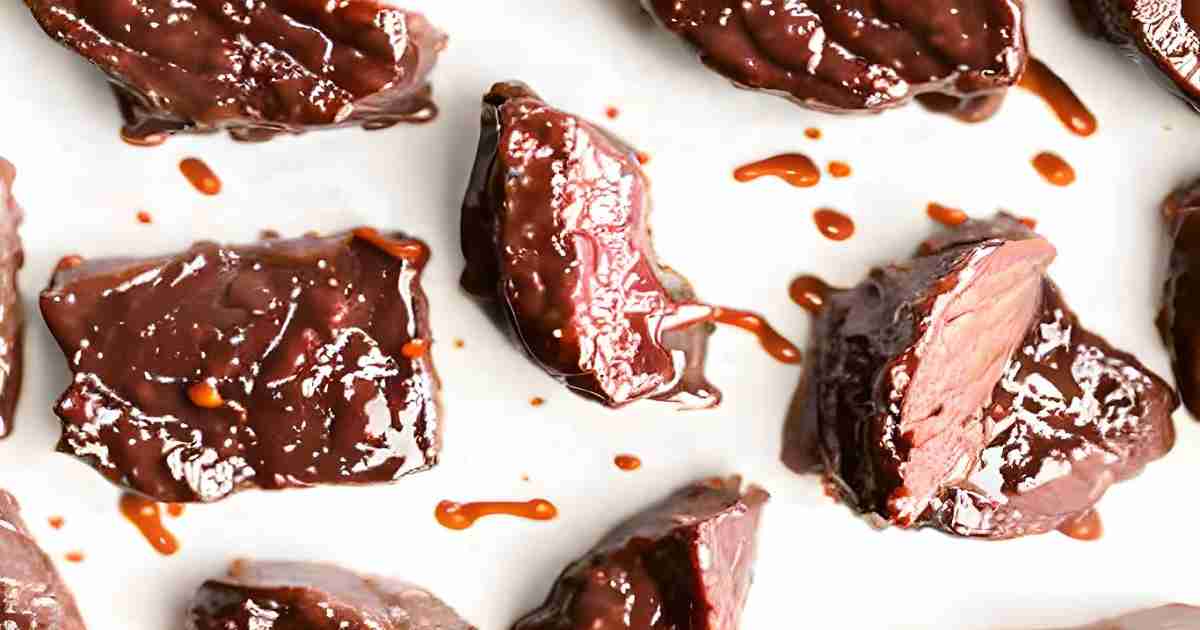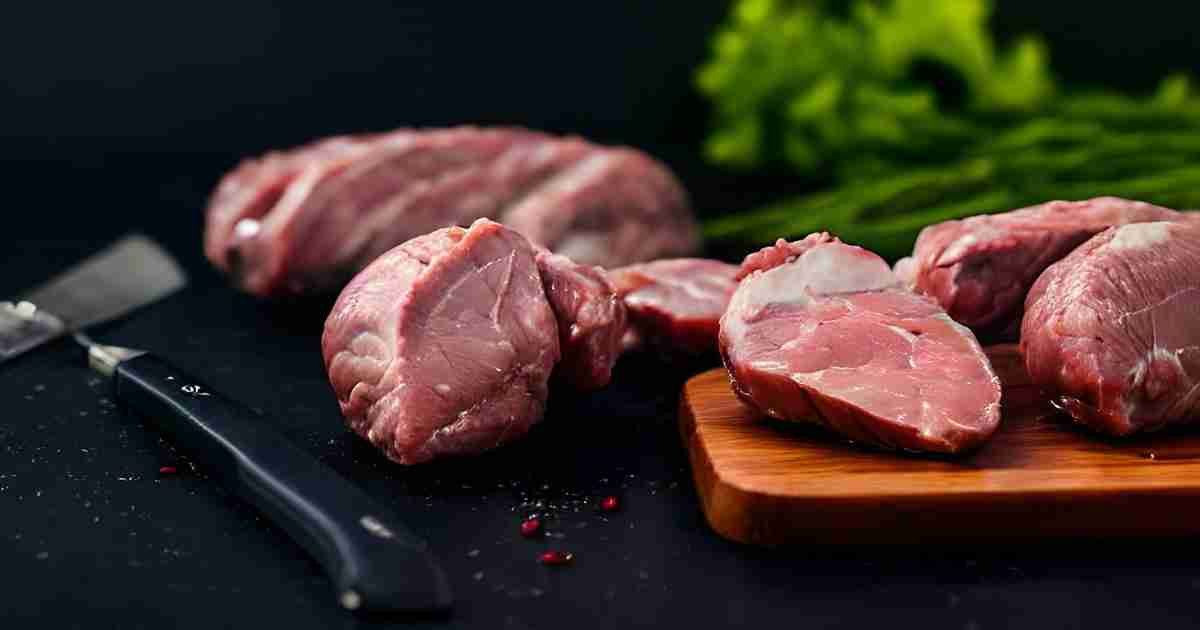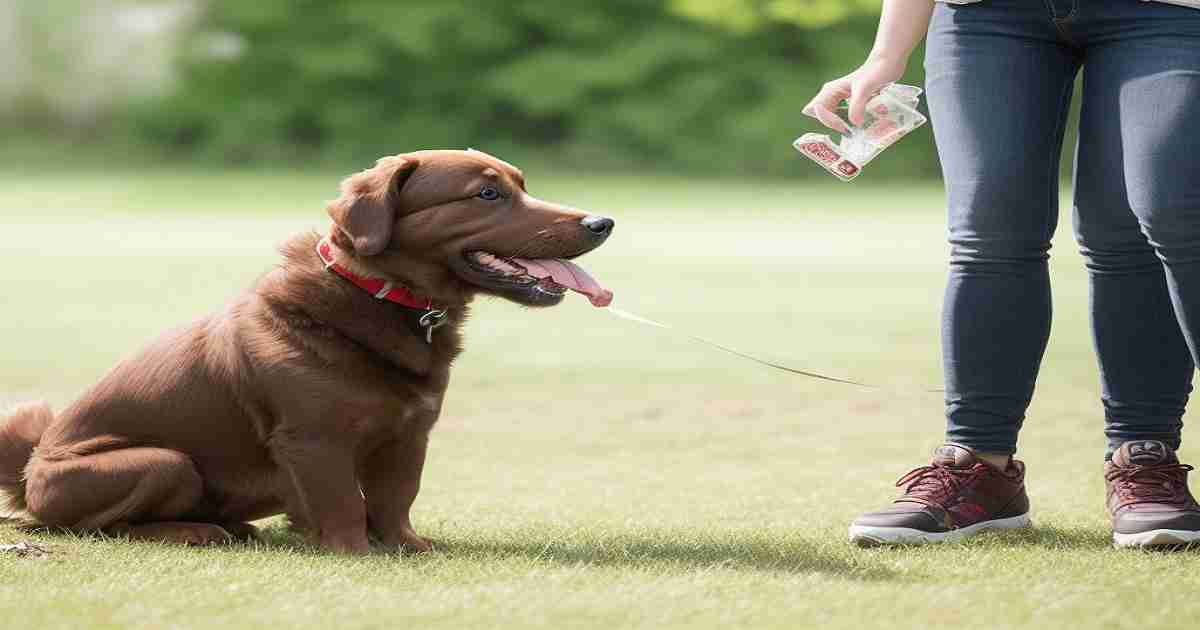Is your pup begging for a taste of chicken liver when you’re prepping dinner? Or maybe you’re looking for a nutritious homemade treat to mix up your dog’s diet.
Chicken liver can be a great supplemental food for dogs. It’s packed with protein, vitamins, and minerals. However, there are some guidelines on how much to feed dogs to keep it healthy and safe.
In this post, I’ll cover everything you need to know about how much chicken liver to feed your dog. You’ll learn:
- The health benefits of chicken liver for dogs
- Potential risks and how to avoid them
- Exactly how much chicken liver to feed dogs big and small
- Tips for preparing homemade chicken liver treats and meals
- Chicken liver recipe ideas your dog will love
- Whether to feed cooked or raw chicken liver
Plus plenty of info to help you make the best choice for your furry friend! Let’s get started.
What Are the Benefits of Feeding Dogs Chicken Liver?
Chicken liver is nutritious for humans and dogs alike. It packs a big nutritional punch in a small package. Here are some of the top health benefits of adding chicken liver to your dog’s diet:
High in Protein
Chicken liver is loaded with quality protein. Per ounce, it provides around 7-8 grams of protein (1). That’s more protein than a same-sized serving of chicken breast!
Protein is crucial for dogs to build strong muscles, tissues, and immune systems. The amino acids in protein also play many roles in metabolism and cellular function (2).
So feeding your dog some chicken liver gives their diet an extra protein boost. It helps maintain lean muscle mass, especially for senior dogs or dogs recovering from illness.
Rich in Vitamin A
Chicken liver is very high in vitamin A, providing over 300% of a dog’s daily needs in just an ounce (3).
Vitamin A (retinol) is important for dogs’ vision, bone development, immune health, and cellular growth. It also helps keep their skin and coat healthy (4).
The abundant vitamin A in chicken liver supports eye and skin health. It also has antioxidant properties to help fight disease.
Good Source of B Vitamins
Chicken liver contains several B vitamins like niacin, riboflavin, B12, and folate.
B vitamins help dogs convert food into energy. They also support proper nervous system function, digestion, and more.
Niacin in particular promotes healthy skin and coat in dogs (5). The B12 in liver prevents anemia by aiding red blood cell formation (6).
High in Iron
Chicken liver contains heme iron, the most bioavailable form for dogs to absorb. Per ounce, it provides around 5-6 mg of iron (7).
Iron carries oxygen through the blood to organs and muscles. It also supports immune health and metabolism (8).
The dense iron content in liver prevents dogs from developing iron-deficiency anemia. It’s especially important for puppies and pregnant/lactating dogs who have higher iron needs.
Natural Source of Glucosamine
Chicken liver naturally provides glucosamine, a vital compound for joint health (9).
Glucosamine helps build cartilage that cushions joints. It also reduces inflammation that causes arthritis and joint damage.
Feeding chicken liver provides a natural anti-inflammatory boost for dogs’ joints. It may help prevent and manage painful arthritis.
More Nutrient-Dense Than Chicken Meat
Ounce for ounce, chicken liver contains far higher amounts of many vitamins, minerals, and protein compared to chicken breast or thighs.
In fact, chicken liver contains over 10 times more vitamin A, iron, copper, and phosphorus (10).
This nutrient density makes chicken liver a powerhouse food. Even small amounts provide big health benefits.
Are There Any Risks With Feeding Chicken Liver to Dogs?
While chicken liver is very nutritious, there are some important safety guidelines to follow when feeding it.
Too Much Vitamin A Can Be Harmful
As mentioned earlier, chicken liver is extremely high in preformed vitamin A (retinol) – over 300% of a dog’s daily needs in just 1 ounce!
While vitamin A is an essential nutrient, getting excessive amounts for an extended time can cause vitamin A toxicity.
Possible symptoms of vitamin A overdose in dogs include (11):
- Loss of appetite
- Weight loss
- Joint pain
- Bone deformities
- Itchy skin
- Hair loss
- Fatty lumps under the skin
It’s very unlikely your dog would ever get vitamin A toxicity from intermittent chicken liver treats or meals. But it is possible if fed very large liver-heavy meals frequently.
To prevent vitamin A overdose when feeding chicken liver:
- Limit liver to treat-sized portions or less than 10% of your dog’s daily diet.
- Avoid feeding liver every single day, especially large amounts. Follow the portion guidelines later in this post.
- Watch for any symptoms of vitamin A overdose and discontinue liver feeding if they develop.
- Don’t give your dog vitamin A supplements in addition to liver, as the combined amounts could be excessive.
Following these precautions will allow you to safely feed this nutritious food. Monitor your dog for any adverse symptoms and adjust portions accordingly.
Spoiled Liver Can Cause Food Poisoning
Like any meat, chicken livers can spoil and harbor dangerous bacteria if not stored and handled properly. Possible contaminants include:
- Salmonella – Causes vomiting, diarrhea, fever, and abdominal pain.
- E. coli – Leads to vomiting, bloody diarrhea, and dehydration.
- Campylobacter – Results in diarrhea, cramping, fever, and vomiting.
- Listeria – Causes fever, muscle aches, circling, collapse, and tremors.
Consuming spoiled chicken liver puts dogs at risk of painful and potentially life-threatening food poisoning.
To avoid foodborne illness when feeding chicken livers:
- Purchase fresh livers before their sell-by date. Check for a bright red color and no sliminess.
- Refrigerate livers right away and use within 1-2 days. Freeze for later use.
- Thaw frozen livers safely in the fridge, not room temp.
- Wash livers before serving to reduce bacteria. Don’t cross-contaminate.
- Cook livers to an internal temperature of 165°F (74°C) to kill pathogens if unsure of their freshness.
- Avoid letting raw liver sit out at room temp before serving to prevent bacterial overgrowth.
- Discard any liver that smells bad or looks discolored. When in doubt, throw it out!
Following proper food safety practices minimizes the risk of foodborne illness from chicken livers or any raw meat product.
Can Dogs Eat Raw Chicken Liver?
Raw meat diets have become increasingly trendy for dogs. But is raw chicken liver safe?
Potential benefits of raw chicken liver:
- Higher moisture content – Cooking decreases moisture, which could help with hydration.
- Possibility of more nutrients – Cooking may destroy some vitamins and antioxidants like vitamin B1 and polyphenols (12).
- Enzymes and probiotics – Raw foods contain digestive enzymes and probiotics that may help some dogs better absorb nutrients (13).
However, there are some notable downsides to feeding dogs raw chicken liver:
- Bacteria risk – Pathogens like salmonella are a concern with all raw meat.
- Parasites – Chicken liver may contain parasites like toxoplasma and roundworms.
- Vitamin A toxicity – Some research shows dogs may absorb more vitamin A from raw vs cooked liver (14).
Overall, the potential benefits of raw chicken liver are unlikely to outweigh the risks for most dogs. Lightly cooking chicken liver reduces the risks without significantly compromising nutrition.
For safety, it’s best to avoid feeding dogs raw chicken meat or skin as well. Stick to cooked chicken products to prevent foodborne illness.
Interactions With Certain Medications
In some cases, the vitamin A in chicken liver can interact with medications dogs take.
For example, vitamin A may potentially increase toxicity risks for some chemotherapy drugs like doxorubicin (15).
Dogs taking anti-seizure medications may also need liver intake restricted, as vitamin A may lower the threshold for seizures in some cases (16).
If your dog takes any chronic medications or chemotherapy drugs, check with your veterinarian about any possible liver interactions.
How Much Chicken Liver Should I Feed My Dog?
Now that you know the health benefits and potential risks of chicken liver for dogs, let’s discuss proper dosing.
The amount of chicken liver you can feed your dog depends on their size, weight, and overall diet. Use these general guidelines as a starting point:
For Small Dogs:
Examples: Chihuahua, Yorkie, Mini Dachshund, Papillon, Toy Poodle, etc.
- Start with 1 teaspoon of chicken liver per day. Monitor stool for diarrhea.
- Work up to feeding 1 tablespoon max per day.
- Spread into multiple small servings, not one large portion.
For Medium Dogs:
Examples: Corgi, Boston Terrier, Pug, Cocker Spaniel, French Bulldog, etc.
- Start with 1-2 tablespoons per day. Monitor stool for diarrhea.
- Work up to 1-3 tablespoons max per day.
- Spread into multiple smaller servings, not one large portion.
For Large Dogs:
Examples: Labrador, Golden Retriever, German Shepherd, Boxer, Siberian Husky, etc.
- Start with 2-3 tablespoons per day. Monitor stool for diarrhea.
- Work up to 2-4 tablespoons max per day.
- Spread into multiple smaller servings, not one large portion.
For Extra Large Dogs:
Examples: Great Dane, Mastiff, Rottweiler, Great Pyrenees, Irish Wolfhound, etc.
- Start with 3-4 tablespoons per day. Monitor stool for diarrhea.
- Work up to 4-6 tablespoons max per day.
- Spread into multiple smaller servings, not one large portion.
These portion sizes reflect daily supplemental amounts of chicken liver, not complete meals.
Chicken liver should always make up less than 10% of your dog’s total daily calorie intake to avoid vitamin A overdose. And keep in mind that less is often more with organ meats.
Also, puppies should have liver introduced slowly and fed sparingly until 12+ months old, as their vitamin A requirements are lower.
If your dog has diarrhea or other symptoms from the liver, reduce the amounts. Some dogs tolerate liver better than others. Work up to the maximum amounts gradually while watching for any issues.
And remember to…
- Divide servings throughout the week – Don’t feed the max daily amount all at once! Space out smaller portions over multiple meals.
- Pair liver with regular dog food for balanced nutrition. Don’t feed only liver.
- Introduce new foods slowly to check for allergies or intolerance.
Now let’s go over some tips for choosing and preparing homemade chicken liver for your dog…
Tips for Preparing Homemade Chicken Liver for Your Dog
One of the great things about chicken liver is that it’s very affordable and easy to find. But not all chicken liver is created equal when it comes to nutrition and safety.
Here are some tips for choosing high-quality chicken liver and fixing it properly for homemade dog food:
Pick the Freshest Liver at the Store
Read package labels closely and choose chicken liver before its sell-by date.
Look for livers with a bright red color without any brown spots or slimy texture. Pass on liver packages that contain a lot of liquid.
Opt for vacuum-sealed packs when possible, as the tight seal helps prevent bacterial growth. Or find them in the meat counter display case on trays sealed with plastic wrap.
You can ask a butcher for fresh chicken livers from behind the counter as well.
Organic, pasture-raised chicken livers are ideal if you can find them. They provide more omega-3s and vitamins than conventionally raised (17).
Wash the Livers Thoroughly Before Serving
Chicken livers should still be rinsed very well before eating to remove bacteria, blood, and other debris.
Place the livers in a colander and rinse under cool running water. Use your fingers to gently rub each liver under the stream.
Make sure to wash your hands thoroughly after handling raw liver to prevent cross-contamination.
Pat the Livers Dry
After washing the chicken livers, use paper towels to pat them completely dry.
Drying prevents splattering if cooking them. Removing excess moisture also concentrates the liver’s rich flavor.
Chop Into Smaller Pieces
Your dog can choke on large chunks of liver. Their teeth may also break pieces off that are too big to swallow safely.
For small or medium dogs, chop the chicken livers into pea-sized pieces or smaller before serving. For large breeds, chop into cube-sized bites.
This makes it easier for your dog to chew and digest the liver.
Lightly Cook the Liver to Kill Bacteria
As discussed earlier, raw chicken liver may contain harmful bacteria like salmonella. Cooking it lightly kills any pathogens present (18).
To lightly cook chicken livers:
- Heat 1 tsp olive oil in a skillet over medium heat.
- Add chopped livers and cook for 2-3 minutes while stirring occasionally until lightly browned but not overcooked.
- Let cool before serving to your dog.
This retains the bioavailable nutrients while making the liver safer to eat.
You can also bake chicken livers in the oven at 350°F for 10-15 minutes until just cooked through but not dried out.
Mix with Your Dog’s Regular Food
One of the easiest ways to feed chicken liver is to mix a portion into your dog’s regular balanced meal.
Add several small spoonfuls of cooked, chopped liver into your dog’s bowl along with their kibble or canned food.
The liver gives their diet an extra boost of protein, vitamins, and minerals. While the regular dog food provides balanced carbs, fat, and fiber.
You can also spoon liver pieces over the top of their meal as a tasty, nutritious topping!
Make Delicious Homemade Liver Treats
In addition to adding liver to meals, another option is baking homemade chicken liver treats!
Dogs go nuts for these savory, protein-packed treats. Liver transforms into a totally different texture when baked – dry, crumbly, and chewy.
Some easy homemade chicken liver treat recipes for dogs include:
Basic Baked Chicken Liver Treats
Ingredients:
- Chicken livers
- Flour
- Egg
- Olive oil
- Salt
Instructions:
- Preheat oven to 350°F. Rinse livers and pat dry.
- Whisk egg in one bowl, flour in another. Coat livers in flour, dip in egg, then flour again.
- Place on a greased baking sheet. Drizzle with olive oil and salt.
- Bake for 15 minutes until golden brown and cooked through.
- Let cool before serving. Store in the fridge for up to 1 week.
Chicken Liver Brownies
(Dog-friendly, of course! No chocolate or sugar.)
Ingredients:
- Chicken livers
- Oat flour
- Eggs
- Peanut butter
- Vegetable broth
Instructions:
- Preheat oven to 350°F. Purée chicken livers in a food processor until smooth.
- Add eggs, oat flour, peanut butter, and vegetable broth. Blend again into batter.
- Pour into a greased baking pan and bake for 25-30 minutes until set.
- Let cool before cutting into small squares for your pup! Refrigerate up to 1 week.
Chicken Liver Pup-Cakes
Ingredients:
- Chicken livers
- Whole wheat flour
- Egg
- Honey
- Applesauce
- Baking powder
Instructions:
- Preheat oven to 400°F. Purée chicken livers in a food processor.
- Add flour, egg, honey, applesauce, and baking powder. Blend until smooth batter forms.
- Scoop batter into greased muffin tins. Bake 15-20 minutes until cooked through.
- Let cool before serving your pup. Refrigerate up to 5 days.
You can get creative with liver treat recipes and add ingredients like oats, bananas, pumpkin, sweet potato, carrots, and more! Just avoid sugar, chocolate, raisins, macadamia nuts, and anything toxic for dogs.
Homemade chicken liver treats make a nutritious training reward or special snack for your furry friend!
Should I Give My Dog Raw or Cooked Chicken Liver?
As we discussed earlier, there are some benefits but also significant risks associated with feeding dogs raw chicken liver.
Many experts recommend lightly cooking chicken liver instead to eliminate foodborne illness risks while retaining the most nutrients possible.
However, opinions vary on whether raw or cooked liver is healthier overall for dogs:
In Favor of Raw Chicken Liver
Some supporters of raw diets argue that raw chicken liver:
- Contains more natural enzymes to aid digestion
- Provides beneficial probiotics for gut health
- Has higher moisture content for hydration
- Potentially has greater nutrient availability
In Favor of Cooked Chicken Liver
Proponents of cooking chicken liver point out that:
- Pathogens are destroyed by cooking
- Parasites like roundworm are killed with heat
- Less risk of vitamin A overdose from cooking
- Cooking doesn’t significantly diminish nutrients
- Safer for dogs with compromised immune systems
Overall, most veterinary nutritionists and researchers agree that the potential benefits of raw chicken liver
Conclusion
Chicken liver can be a great supplemental addition to your dog’s diet in moderation. It provides a powerhouse dose of protein, vitamins, minerals, and other nutrients dogs need.
Follow the portion guidelines in this article based on your dog’s size and weight. Introduce new foods slowly, and monitor your dog for any digestive issues. Avoid feeding raw chicken liver or excessive amounts to prevent illness.
Chicken liver makes an affordable, homemade treat option dogs love too. Just be sure to handle and store it properly for safety. With some simple precautions, you can safely feed your furry friend this nutritious food.
FAQs
Can puppies eat chicken liver?
- Yes, but introduce it slowly and feed smaller amounts. Puppies under 12 months old have lower vitamin A requirements than adult dogs, so too much can be toxic. Wait until at least 6 months old to start feeding small liver portions 2-3 times a week.
How long does chicken liver last in the fridge?
- Fresh raw chicken liver will last 1-2 days in the fridge. Cooked liver keeps for 3-5 days refrigerated. For longer storage, freeze raw or cooked liver for 2-3 months. Thaw slowly in the fridge before use. Discard any liver with an off smell or color.
Can I feed my dog chicken liver daily?
- It’s best to limit chicken liver to no more than once or twice a week. Feed it as an occasional treat or meal supplement, not something they eat daily long-term due to its very high vitamin A content.
Is chicken liver good for senior dogs?
- Yes! Chicken liver provides senior dogs with highly bioavailable protein, vitamins, and minerals their aging bodies need. The glucosamine in liver benefits joint health too. Follow the portion guidelines for your dog’s size and monitor closely for any issues.
Are chicken livers safe for dogs with liver disease?
- Dogs with liver disease like cirrhosis often follow diets restricted in proteins and copper. Check with your vet before feeding any new food, but chicken liver may be fine in moderation for dogs with mild liver issues. It provides high-quality protein that is gentle on the liver.









